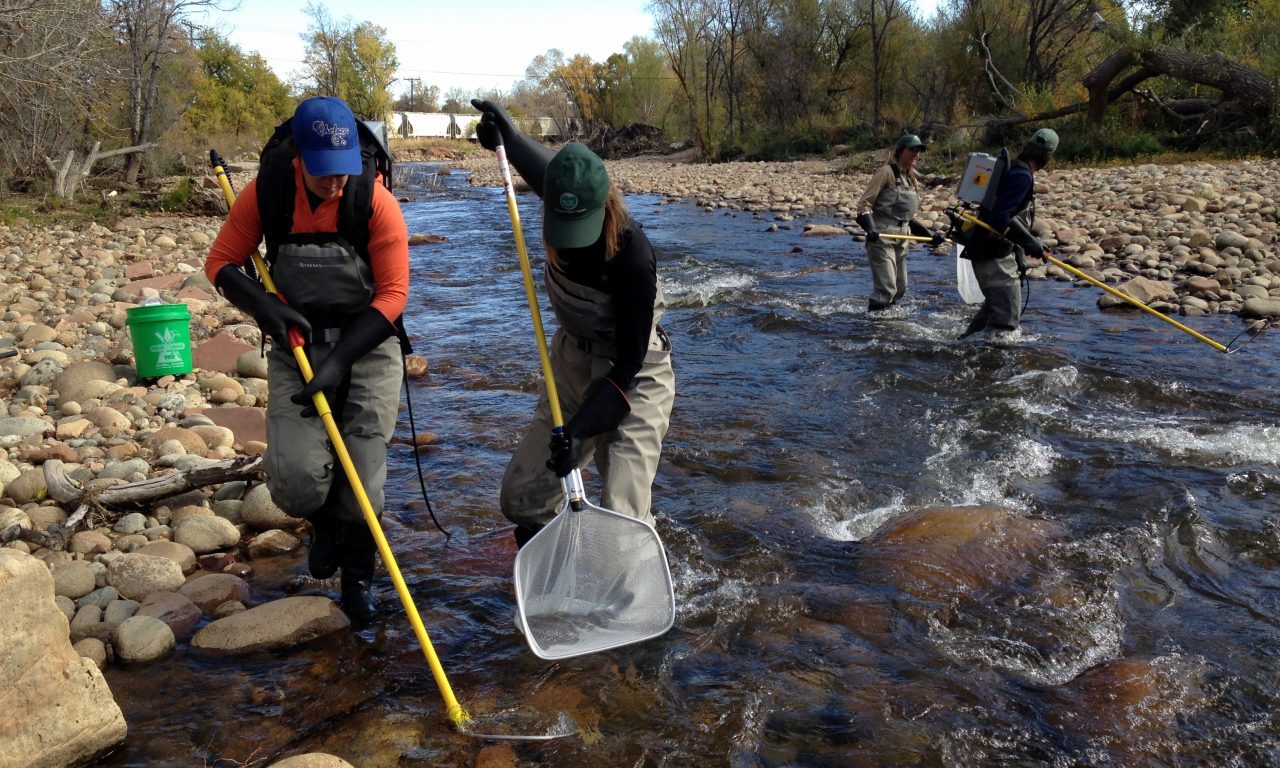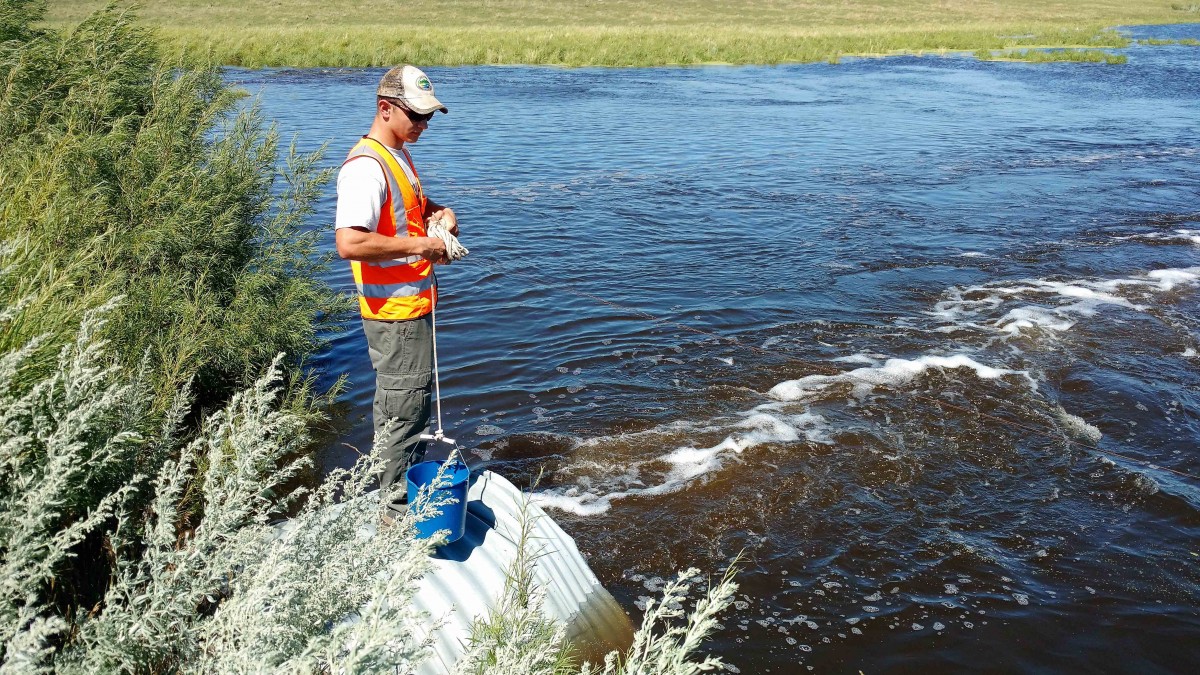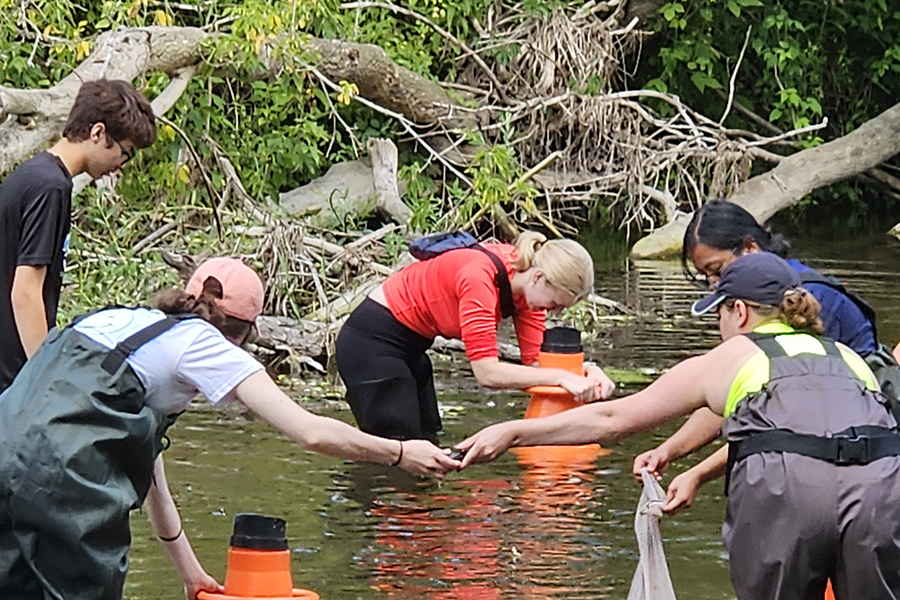Why Monitoring Is Essential
Water resource management strictly depends on watershed monitoring programs. Scientific teams together with resource managers obtain relevant information on water quality along with habitat data and biological community structures to evaluate the condition of rivers streams and surrounding territories. The collected data serves essential purposes including pollution source detection and monitoring temporal changes and restoration project assessment and water cleanliness preservation for human beings and wildlife populations.
What We Measure
A well-designed watershed monitoring system implements several indicators which together provide a precise understanding of watershed condition. These include:
Biological Indicators: The overall ecological condition emerges through monitoring of fish alongside aquatic insects (benthic macroinvertebrates) and algae and aquatic plants. These organisms demonstrate the combined effects of pollution and habitat change because they integrate all water quality and quantity impacts across the watershed.

Chemical Indicators: Watershed conditions regarding pollutant types and concentrations become clearer when regularly conducting chemical tests. The analysis of toxic substances in fish tissue through chemical testing provides information about extended ecosystem well-being.
Physical Indicators: Stream measurements of temperature along with flow rate and turbidity together with dissolved oxygen and pH levels supply essential information on water quality and its contributing stressors. The results from physical assessments reveal any variations that stem from climate events and land management practices and environmental pollution occurrences.
Habitat Assessments: A healthy watershed base depends on conducting assessments of riparian vegetation alongside stream bank conditions and in-stream habitat integrity assessment. The analysis of habitats frequently reveals biological community declines which surface after chemical and physical measurements show normal results.
How We Monitor
The process of watershed monitoring requires both conventional methods along with contemporary approaches. Regular field teams undertake standardized protocols that allow them to measure physical parameters while collecting biological specimens and water samples and conducting habitat assessments. Technology has become indispensable for increasing purposes. The combination of sensor networks with remote sensing technology and online monitoring equipment produces ongoing data acquisition together with fast detection abilities for pollution events. The combination of smartphone apps with wireless sensor networks has decreased the challenges of data collection and sharing which in turn increases public engagement and transparency levels.
Designing Effective Monitoring Programs

To achieve successful watershed monitoring one must undertake proper planning steps. Watershed monitoring programs adopt probabilistic sampling approaches to describe overall health conditions but focus their sampling on identified problematic locations or pollution points through targeted sampling. Monitoring different sub-watershed areas through rotating basin methods allows effective resource management and the detection of long-term patterns. Program decision-making for site selection along with the adopted methods depends on project objectives that include restoration success tracking and threat detection and regulatory needs.
Turning Data into Action
Monitoring data provide knowledge for managing watersheds through which restoration projects receive guidance and public participation happens. The process of monitoring allows us to make effective use of resources while establishing objective progress measurements through identification of trends and source location and intervention evaluation. People who access public data regarding watershed health can mobilize themselves to defend clean water thereby contributing to environmental stewardship.
Conclusion
The continuously running multidisciplinary watershed health monitoring program merges field activities with technological solutions together with community involvement. We obtain vital knowledge for safeguarding our water supplies through biological, chemical, physical and habitat indicator tracking which benefits present and future generations.

